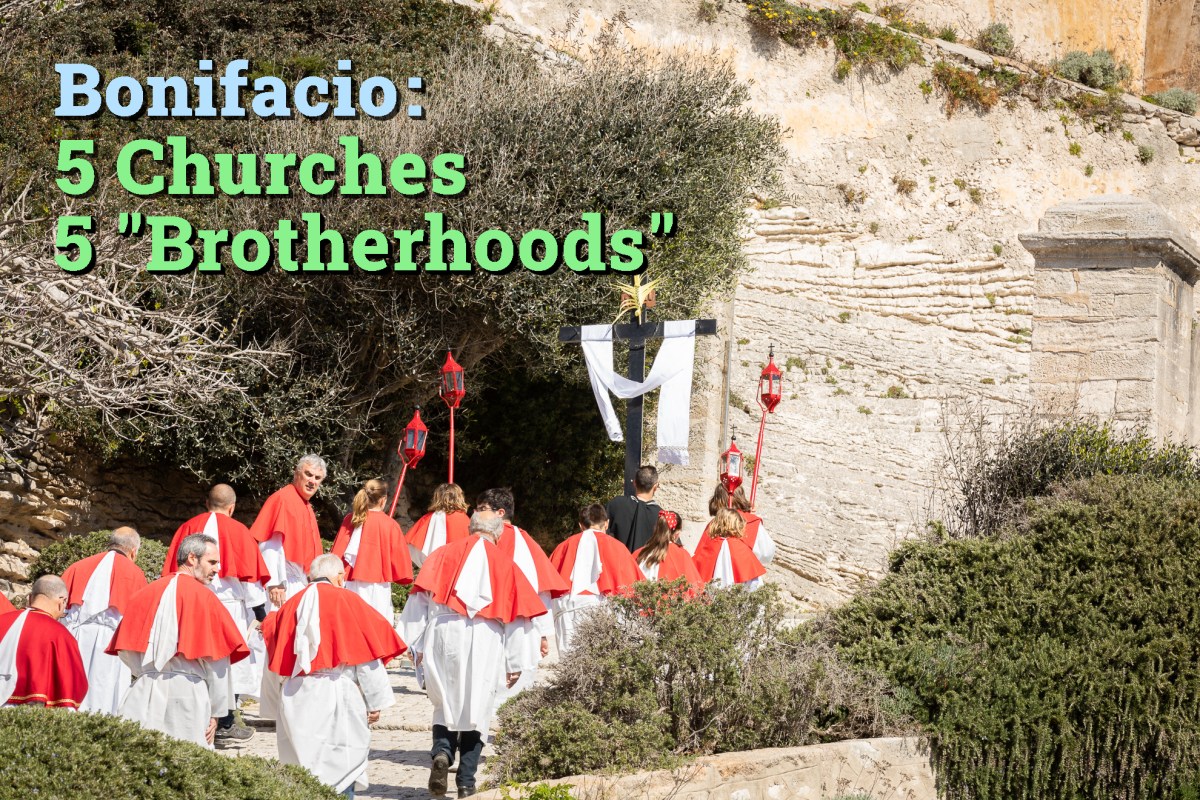Lenten Campaign 2025
This content is free of charge, as are all our articles.
Support us with a donation that is tax-deductible and enable us to continue to reach millions of readers.
Bonifacio is undoubtedly one of the most beautiful spots in Corsica. The dramatic white limestone cliffs and natural harbor of the southern tip of the French island are awe-inspiring Corsican masterpieces. The strong Italian influence in the town’s architecture is equally striking, as are its Roman Catholic churches and Catholic culture in general. This is not surprising, as the French island’s oldest town is only 56 miles from Northwestern Italy.
Bonifacio has 5 significant churches associated with confréries, some dating back to the 13th century. This medieval city boasts the largest number of confréries in Corsica -- a movement that began in the 12th century and burgeoned during a period that saw significant epidemics and the Council of Trent (1545 -1563).

Confrérie: A strong bond among inhabitants
A confrérie is a non-profit association of lay faithful authorized by the church and supervised by the bishop. In English confrérie translates to brotherhood or confraternity. Members are not part of the clergy; they are valued members of the Catholic community, devoted to God and united in their Catholic faith. Despite the name, “brotherhoods” can be open to women as well as men.
In Bonifacio, the confrérie movement isn't just about religious roles; it functions as a solid social bond among inhabitants, with each confraternity representing a specific trade or corporation, just as in the days of the medieval guilds that protected artisans.
Similar to these medieval associations, the five "brotherhoods" provide mutual aid and conviviality, which is of utmost importance for the tradition to continue.
View the PHOTO GALLERY at the end of the article to see images of the 5 "brotherhoods" and their home churches.
Easter processions in Bonifacio
Easter is an especially busy time for the confréries: Holy Week processions, Masses, and ceremonies must be organized. The five confraternities, each dedicated to a patron saint, start preparing for Easter a month or so beforehand.
Altars are prepared and each brotherhood has a dress code distinguishable by the color of their albs, hoods, and collars.
The members all meet on Holy Thursday at Sainte Marie Majeure church for a Tenebrae Service. On Good Friday, the processions start at 8 in the morning with songs and visits to the five churches. The confréries and their followers traverse the port and the old town: their processions sometimes cross paths with each other.
Confraternity of St. Erasmus
The brothers and sisters of St. Erasmus dress in white and purple: they unite fishermen and sailors. This most recent confraternity of Bonifacio was created in 1893. The brothers go out to sea on June 2, the feast of St. Erasmus.
Their home parish, Saint Erasmus Church, is located at Bonifacio's port.
Confraternity of St. Mary Magdalene
This group, recognized in their green albs and blue camails, consists of farmers, winegrowers, and land cultivators. They are based at Eglise Sainte Marie Majeure. This is Bonifacio’s main church, reputed to be Bonifacio's oldest church. It dates to the 12th century. Situated in the citadel, Sainte Marie Majeure was the leading center for city life in medieval times.
Confraternity of St. Bartholomew
This community, comprised of Bonifaccio's masons and artisans, wear white albs and red camails. They are associated with St. Dominique church. Built of white limestone, Saint Dominique is around 700 years old.
Confraternity of St. John the Baptist
Carpenters and artisans unite this confrérie, also known as the Brothers of Mercy. Their mission is to provide material help for the most needy and ensure everyone has a decent burial. They dress entirely in black.
The Church of St. John the Baptist is also called the Chapelle de la Mesércorde.
Confraternity of Saint Croix
This community represents the city’s health professions, caring for the sick. Unlike the other confraternities, they do not honor a particular saint but instead venerate the cross of Christ’s martyrdom. It is said to be the oldest confraternity in Bonifacio, along with the Confraternity of St. John the Baptist. They wear white albs and black camails.
Their home parish, Eglise Saint Croix, dates back to the 13th century. It is reputed to house a shrine containing a fragment of the true cross.
Upkeeping tradition while taking pride in their heritage, the five confréries encompass a real spiritual bond in Bonifacio. As one member of the Confraternity of St. Mary Magdalene explained:
“We pray while making vows of charity and helping our neighbors. We walk in the footsteps of Christ and under the protection of the saint we venerate.”
Editor's note: Aleteia would like to thank Hélène Battaglini from the Bonifacio Tourist Board for her help in preparing this story.











